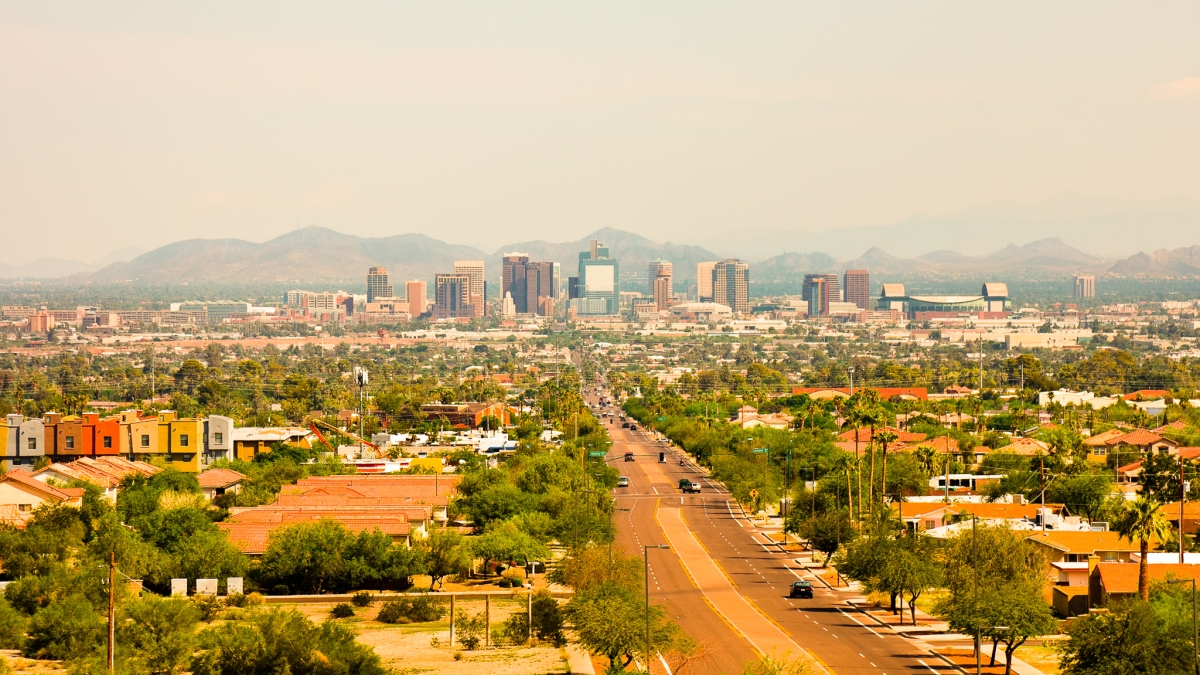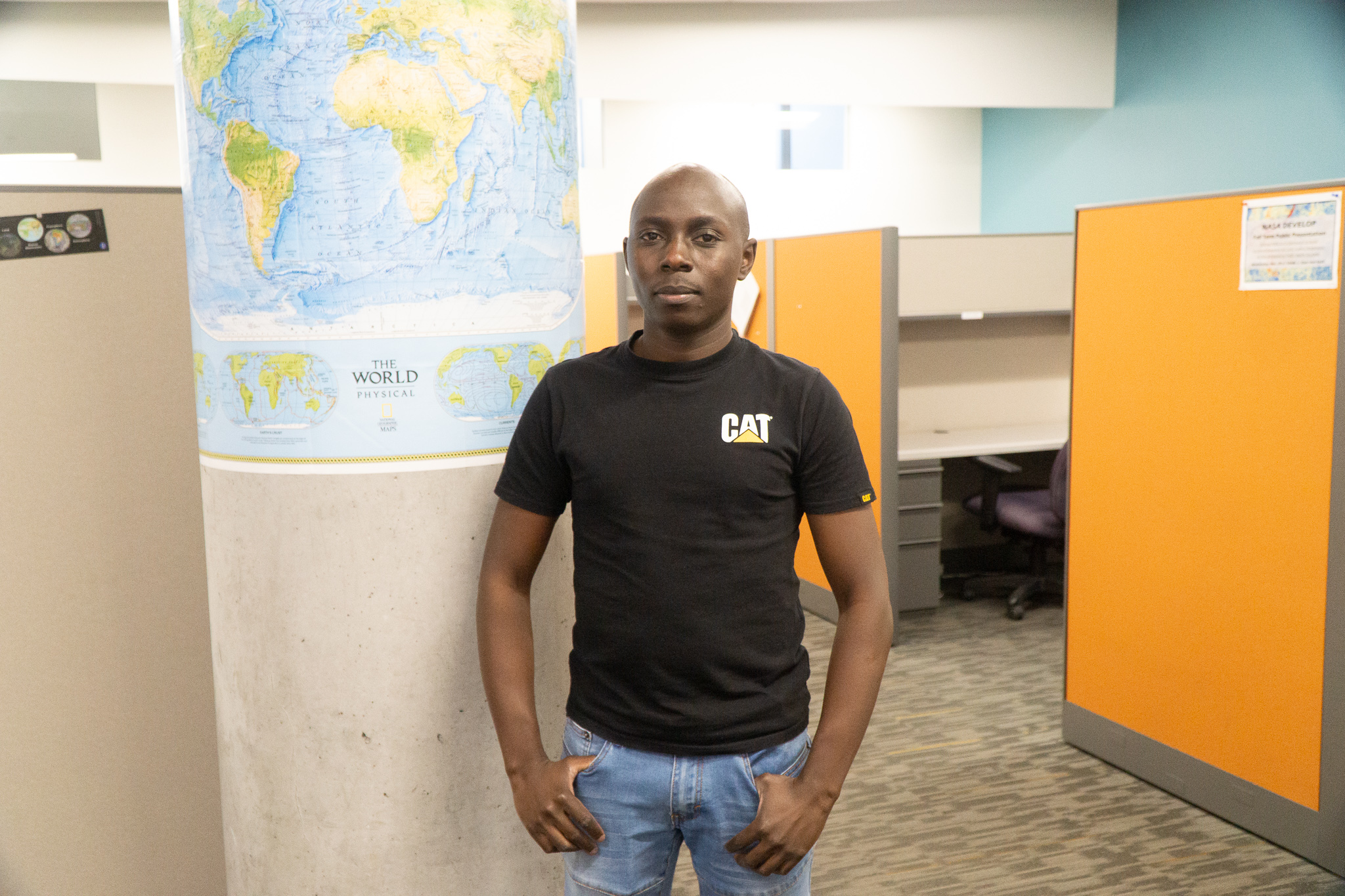There’s no debate, heat-related illnesses are common during the summer in Phoenix.
Year after year, nearly 3,000 people visit Arizona emergency rooms because of heat-related illnesses. Heat-related deaths have increased by more than 180% in the last decade, and in 2020, there were 323 heat-related deaths in Maricopa County alone.
Cities like Phoenix are relying on current heat-vulnerability models for mitigation strategy decision-making that, while helpful, are fraught with limitations — due in part to the way they are constructed and the data used — and risk, leaving out some of the most vulnerable populations in need.
Joseph Karanja, a graduate student in the School of Geographical Sciences and Urban Planning, is conducting research to create one of the most holistic views of how heat disproportionately impacts specific communities around Phoenix to better understand how we as a city can help arm the most vulnerable against looming heat-health threats.
“Comparing outcomes in Maricopa County, homeless account for about 40% of the deaths, yet census datasets (the information that powers current heat-health modeling) cannot account for that population,” Karanja said. “We are simply relying on these data because of the absence of an alternative. I want to challenge that. I want to prompt people to think of alternative data sets and alternative ways of thinking.”
In his research, Karanja interrogates not only what variables are most important to include in heat-vulnerability models, but using statistical techniques, he creates new ways to unify disparate information to gain new perspectives on how communities are experiencing varying heat stress and heat-health impacts.
Karanja recently presented a commentary paper titled “Methodological Rationale for Heat Vulnerability Indices as Predictors of Heat-Health Outcomes” at the American Association of Geographers annual meeting in February, discussing a portion of this research.
“There has been an increasing amount of work, globally, focused on improved understanding of what variables serve as the best metrics for assessment of heat-health outcomes,” said Matei Georgescu, associate professor in the School of Geographical Sciences and Urban Planning and a co-author of the study. “Where is exposure to extreme heat greatest? Which populations have the greatest sensitivity to extreme heat? What barriers, both physical and social, need to be removed to enhance the capacity of populations to adapt to extreme heat?
“Joseph's work directly tackles this critical research gap by focusing on simplifying the overall approach through a re-conceptualization of the very methodological aspects that are the foundation for heat vulnerability indicator development. His work is helping to reshape the very foundation that is required for characterizing heat-health outcomes across global cities.”
Joseph Karanja.
Reenvisioning a complex process and unifying data
At the heart of his research, Karanja is creating a new composite heat-vulnerability metric — a metric that combines not only biophysical (heat) data, but also socioeconomic data from various sources to give researchers and policymakers a finer lens into who is most heat-health vulnerable.
Karanja explains that by coupling these metrics and finding the optimal way to meld them together, his research hopes to capture the overlooked nuances of how heat disproportionately affects communities, which include: differences in how heat exposure impacts people living in different geographical parts of the city that may or may not have infrastructure that can reduce heat impact; and differences in income and people’s ability to have reliable access to air conditioning or beneficial tree canopy in their yards.
“We need to continuously look at the current data, new data; evaluate how we are continuously constructing metrics; see how those metrics influence health outcomes and inform decision-making; and at the same time, (think about) how do those health outcomes inform the construction of the metrics and the collection of data in the first place,” he said. “We're creating a feedback loop system.”
Karanja’s research not only interrogates the metrics we currently use, but evaluates our current approach to the process, reimagining it as an evolving cycle that will continue to be refined as more information becomes available.
“I have never met a student with a greater desire, an unquenchable thirst, to learn,” said Georgescu, who serves as Karanja’s academic adviser. “He is undaunted by challenges and is unfazed at immersing himself in completely new fields. Joseph is a future global star. I am very excited to be a part of the next three to four years of his experience at Arizona State University.
“I am equally excited to see where his passions and thirst for making a global difference lead him down the road, beyond ASU.”
A world away
Karanja’s research and educational drive have ties to a humble beginning.
A native of Webyue, Kenya, a modest town near the eastern border of Uganda with makeshift settlements and a sugar cane plantation, Karanja says it’s his community that rallied around him and enabled him to pursue his educational endeavors.
“I was brought up by a single mother, so my story is being part of a lot of struggle in Kenya,” Karanja said. “Basic education was not free at the primary school level and in secondary school level. It's actually the community that came together and sponsored me to get to high school.”
He went on to receive a bachelor’s degree in Kenya from Kenyatta University with a focus on environmental planning and management, focusing on rural neighborhood planning, regional and urban planning, and governance issues that relate to planning and design. He says he sees his work today with analyzing heat vulnerability as a mechanism for better understanding society.
“When I came to the U.S., I really wanted to study urban planning, but I realized having been brought up in squalor-like settlements, there are so many urban challenges,” Karanja said. “If you are to solve challenges tied to heat, to some large extent, you are dealing with climate change problems associated with population growth and rapid urbanization.
“You’re, in a way, solving so many problems just by looking at heat in all its multi-dimensionality.”
The right place to start
Karanja hopes his research not only will lay the groundwork for future heat-vulnerability models to better characterize heat-health outcomes in cities, but one day, he hopes to be able to conduct similar research in his home country in Kenya.
He credits his supportive environment throughout his academic career for the opportunities he’s had and the impact he plans to make.
“I want to thank people who have been significant in my life, believed in and nurtured me,” Karanja said. “I’ve had a very supportive environment, and to provide some contribution to the scientific community towards the construction of heat matrices, I believe here at Arizona State University is the right place to start.”
Top photo courtesy depositphotos.com
More Environment and sustainability

'Earth Day Amplified' promotes power of collective action
Everybody loves the concept of sustainability. They want to do their part, and the chance to say they’ve contributed to the well-being our of planet.But what does that actually mean?Arizona State…

Rethinking Water West conference explores sustainable solutions
How do you secure a future with clean, affordable water for fast-growing populations in places that are contending with unending drought, rising heat and a lot of outdated water supply infrastructure…
Meet the young students who designed an ocean-cleaning robot
A classroom in the middle of the Sonoran Desert might be the last place you’d expect to find ocean research — but that’s exactly what’s happening at Harvest Preparatory Academy in Yuma, Arizona.…



